A nonreactive pan is not just a cooking tool; it’s a secret weapon in the culinary world’s arsenal. Imagine a pan that dances gracefully with acidic ingredients, never altering their flavors or tarnishing their vibrant hues.
Picture a cooking vessel that remains stoic and composed, unfazed by the tartness of tomatoes or the tanginess of vinegar.
This is the essence of a nonreactive pan—an unsung hero that preserves the purity of your culinary creations, ensuring that every dish emerges with its original essence intact.
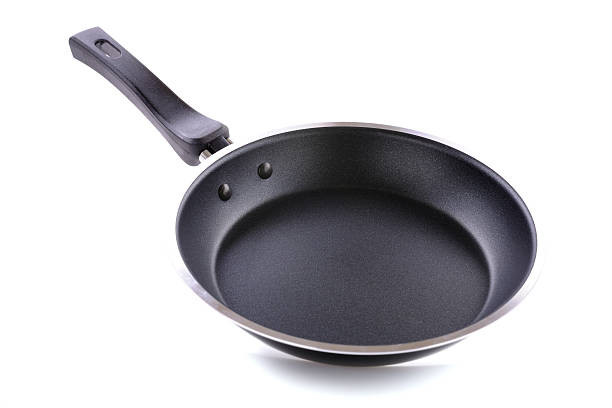
What Is A Nonreactive Pan
A nonreactive pan is a cooking vessel that does not chemically react with acidic or alkaline ingredients, such as tomatoes, vinegar, or wine.
This type of pan is commonly made from materials like stainless steel, glass, ceramic, or enamel-coated metals, which are inert and do not impart any unwanted flavors to the food.
Nonreactive pans are highly sought after for tasks like simmering delicate sauces, reducing liquids, or cooking acidic foods without affecting their taste or appearance.
Chefs often prefer nonreactive pans for preparing dishes that require precise flavor profiles and consistent results, as they ensure that the food’s natural flavors remain intact.
When searching for nonreactive pans, people may also use terms like “food-safe cookware,” “neutral materials,” or “non-corrosive pots and pans” to describe these kitchen essentials.
These pans are versatile, durable, and easy to clean, making them a favorite among home cooks and professional chefs alike for a wide range of cooking techniques and recipes.
Nonreactive Materials
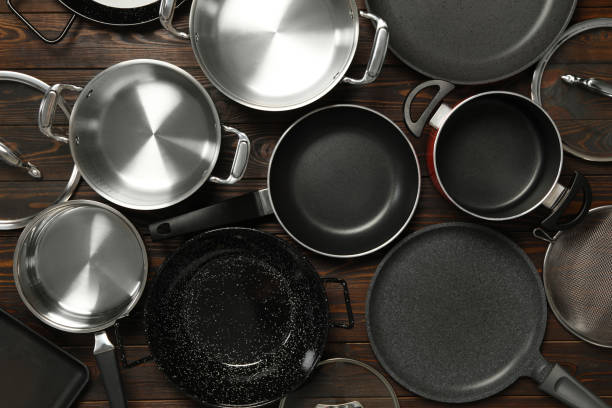
Nonreactive materials refer to substances that do not chemically react with other elements or compounds under normal conditions. In the context of cookware and kitchen utensils, nonreactive materials are highly desirable because they prevent unwanted chemical interactions that can alter the taste, color, or nutritional value of food.
Here are some common nonreactive materials used in cookware and their advantages:
- Stainless Steel: Stainless steel is a popular choice for nonreactive cookware due to its durability, resistance to corrosion, and nonporous surface. It does not react with acidic foods like tomatoes or vinegar, making it suitable for a wide range of cooking tasks.
- Glass: Glass cookware, such as baking dishes and measuring cups, is nonreactive and transparent, allowing you to monitor food as it cooks. It is easy to clean and does not absorb odors or flavors from foods.
- Ceramic: Ceramic cookware is nonreactive and provides excellent heat distribution, resulting in even cooking. It is also nonstick when properly seasoned, reducing the need for excessive oil or fat during cooking.
- Silicone: Silicone is a flexible and heat-resistant material often used in baking mats, spatulas, and molds. It is nonreactive, nonstick, and easy to clean, making it a versatile choice for kitchen tools.
- Enamel-Coated Cast Iron: Cast iron cookware coated with enamel is nonreactive and retains heat well, making it suitable for slow cooking and braising. The enamel coating prevents rusting and eliminates the need for seasoning.
The advantages of nonreactive materials in cookware include preserving the natural flavors of ingredients, preventing metallic tastes or discoloration, and ensuring food safety by avoiding harmful chemical reactions. When choosing cookware, especially for acidic or delicate foods, opting for nonreactive materials can enhance the quality of your cooking and the enjoyment of your meals.
Non-Stick Cookware
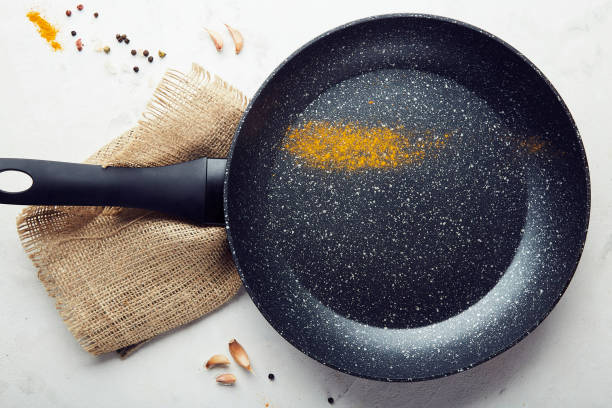
Non-stick cookware refers to kitchen utensils and pots and pans with a special coating that prevents food from sticking to the surface during cooking. This coating is typically made of polytetrafluoroethylene (PTFE), commonly known as Teflon, or ceramic materials. Here are some key points about non-stick cookware:
Advantages
- Ease of Cooking: Non-stick surfaces make cooking and cleaning easier since food slides off the pan effortlessly.
- Less Oil Usage: Non-stick coatings reduce the need for oil or butter, promoting healthier cooking with less fat.
- Versatility: Non-stick pans are suitable for a wide range of cooking techniques, including frying, sautéing, and making delicate foods like eggs and pancakes.
- Quick Cleaning: Due to their nonstick properties, these pans are usually easier to clean than traditional cookware.
Materials
- Teflon (PTFE): Teflon is a synthetic polymer that provides excellent non-stick properties. However, it’s important to note that overheating Teflon pans can release harmful fumes, so it’s crucial to use them within their recommended temperature limits.
- Ceramic: Ceramic non-stick coatings are made from natural materials and are considered safer than Teflon. They are also more environmentally friendly.
Care and Maintenance
- Avoid High Heat: To prolong the life of non-stick cookware, avoid using high heat settings, which can degrade the non-stick coating.
- Use Plastic or Wooden Utensils: Metal utensils can scratch and damage the non-stick surface. Opt for plastic, silicone, or wooden utensils instead.
- Hand Washing: While some non-stick pans are labeled as dishwasher-safe, hand washing with a soft sponge and mild detergent is often recommended to maintain the coating’s integrity.
- Avoid Abrasive Cleaners: Harsh abrasives and scouring pads can scratch the non-stick coating. Use gentle cleaning methods to preserve the non-stick properties.
Replacement
- Non-stick coatings may wear off over time, especially with frequent use and improper care. It’s advisable to replace non-stick cookware when the coating becomes visibly scratched or starts to peel, as this can compromise its non-stick properties and safety.
By following proper usage and care guidelines, non-stick cookware can be a convenient and valuable addition to your kitchen, making cooking tasks more efficient and enjoyable.
Reactive Vs. Nonreactive Pans
Reactive and nonreactive pans refer to cookware materials that interact differently with acidic or alkaline ingredients. Understanding the distinction between these types of pans is crucial for cooking certain dishes and maintaining the integrity of flavors. Here’s a breakdown of reactive vs. nonreactive pans:
Reactive Pans
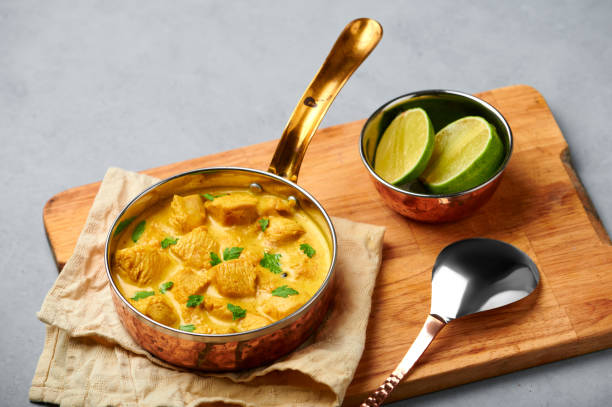
- Materials: Reactive pans are typically made of metals such as aluminum, cast iron, copper, and uncoated carbon steel.
- Reaction with Acids: These pans can react with acidic ingredients like tomatoes, citrus fruits, and vinegar. The reaction can cause a metallic taste in the food and may even discolor the pan or affect its durability over time.
- Best for: Reactive pans are excellent for cooking dishes that don’t contain acidic ingredients or for recipes where a reaction with the pan adds flavor, such as deglazing for pan sauces.
Nonreactive Pans
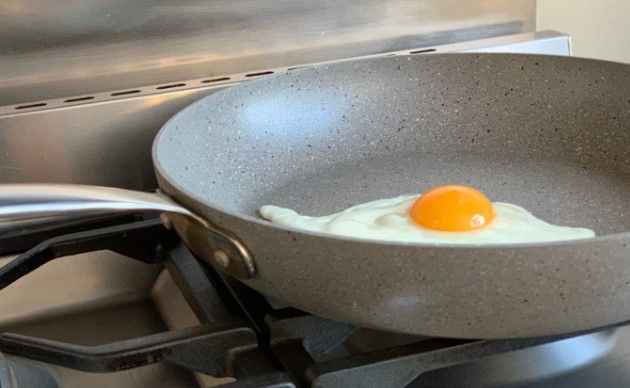
- Materials: Nonreactive pans are made of materials that do not chemically react with acidic or alkaline substances. Common nonreactive materials include stainless steel, glass, ceramic, enamel-coated cast iron, and certain types of non-stick coatings like ceramic coatings.
- No Chemical Reaction: Nonreactive pans do not alter the taste or color of acidic foods and are safe to use with all types of ingredients.
- Best for: Nonreactive pans are ideal for cooking acidic dishes like tomato-based sauces, citrus-infused recipes, and dishes containing wine or vinegar. They are also suitable for preparing delicate foods that require precise flavor profiles.
When choosing between reactive and nonreactive pans, consider the ingredients and cooking techniques involved in your recipe.
Nonreactive pans are versatile and can be used for a wide range of dishes, providing consistent cooking results without affecting the flavor of your food. However, reactive pans can be beneficial for certain cooking methods where a reaction with the pan surface enhances the dish’s taste and complexity.
Food That Requires The Nonreactive Pan
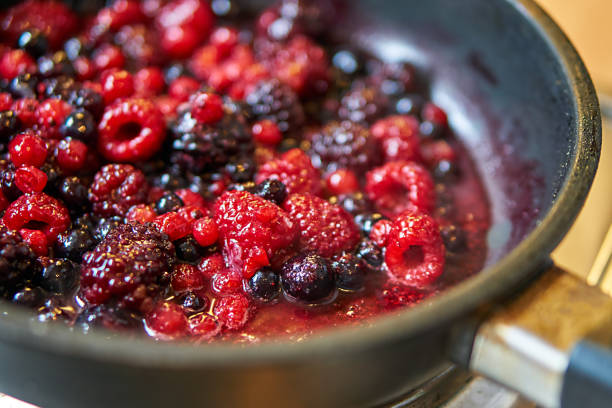
Several types of food benefit from being cooked in nonreactive pans to preserve their flavors and avoid undesirable chemical reactions. Here are some examples of foods that are best cooked in nonreactive pans:
- Acidic Sauces: Dishes that contain acidic ingredients like tomatoes, citrus fruits, vinegar, or wine are best prepared in nonreactive pans. This includes pasta sauces, marinades, and citrus-infused sauces for fish or chicken.
- Fruits and Desserts: Cooking fruits, especially those with high acidity like berries, in nonreactive pans helps retain their natural flavors and colors. Nonreactive pans are also suitable for making delicate desserts like custards, caramel sauces, and fruit compotes.
- Creamy Sauces: Nonreactive pans are ideal for preparing creamy sauces such as Alfredo sauce, béchamel sauce, and cheese sauces. The nonreactive surface ensures that the sauces remain smooth and free from any metallic taste.
- Egg Dishes: Nonreactive pans are great for cooking eggs, whether it’s scrambled eggs, omelets, or delicate egg-based sauces like hollandaise. The nonstick properties of some nonreactive pans also make them suitable for egg dishes.
- Seafood: Nonreactive pans are recommended for cooking seafood dishes, especially those that require acidic marinades or sauces. This includes dishes like lemon-butter sauces for fish, shrimp scampi, and seafood paellas.
- Caramel and Sugar Syrups: When making caramel or sugar syrups, using a nonreactive pan prevents the sugar from crystallizing too quickly and allows for better control over the caramelization process.
- Delicate Foods: Nonreactive pans are suitable for cooking delicate foods that require precise temperature control and minimal interference with flavors. This includes poaching delicate fish, blanching vegetables, and simmering delicate sauces.
By using nonreactive pans for these types of foods, you can ensure that their flavors are preserved, and there are no unwanted chemical reactions that alter the taste or appearance of the dishes. Nonreactive pans provide a reliable cooking surface for a wide range of recipes, making them essential tools in any kitchen.
What To Look For When Buying A Nonreactive Pan?
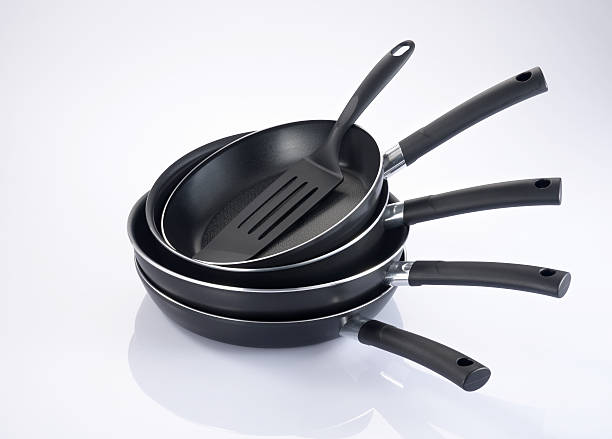
When buying a nonreactive pan, there are several key factors to consider to ensure you get a high-quality pan that meets your cooking needs. Here’s what to look for:
Material
- Stainless Steel: Look for pans made from high-quality stainless steel, which is durable, nonreactive, and easy to clean. Choose pans with an aluminum or copper core for better heat conductivity.
- Ceramic Coating: If opting for a non-stick pan, consider ceramic coatings that are free from PTFE and PFOA for a safer cooking experience.
Thickness
- A thicker pan tends to distribute heat more evenly, reducing hot spots and ensuring consistent cooking results. Look for pans with a sturdy and even thickness throughout.
Handles
- Check for handles that are sturdy, heat-resistant, and comfortable to grip. Handles that are securely attached to the pan and have a good balance make handling the pan easier and safer.
Non-Stick Properties
- If purchasing a non-stick pan, ensure that the non-stick coating is durable, scratch-resistant, and free from harmful chemicals. Look for pans labeled as PFOA-free and with a reputable non-stick coating.
Size and Shape
- Consider the size and shape of the pan based on your cooking needs. Choose a size that accommodates the amount of food you typically cook and fits well on your stove or in your oven.
Compatibility
- Check if the pan is compatible with your cooking appliances, including stovetops (induction, gas, electric) and ovens. Some pans may have limitations in terms of heat resistance and compatibility with certain cooking methods.
Brand and Reviews
- Research reputable brands known for their quality cookware. Read customer reviews and ratings to gauge the performance, durability, and user satisfaction of the pan you’re considering.
Warranty
- Look for pans that come with a warranty, as it provides assurance of quality and coverage for any manufacturing defects or issues that may arise.
Price
- While price is not always an indicator of quality, consider your budget and aim for a pan that offers good value for its features, durability, and performance.
By considering these factors when buying a nonreactive pan, you can make an informed decision and choose a pan that enhances your cooking experience and lasts for years to come.
Nonreactive Pot Cleaning
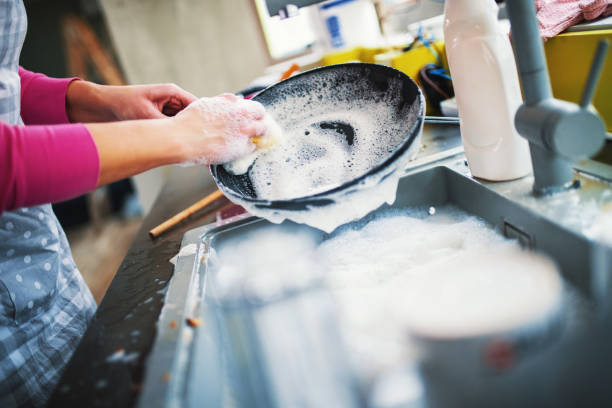
Cleaning nonreactive pots, such as stainless steel, ceramic, or enamel-coated pots, is straightforward with the right techniques. Here’s a guide on how to clean nonreactive pots effectively:
- Cool Down: Allow the pot to cool down before cleaning to avoid burns and to prevent rapid temperature changes that can affect the pot’s integrity.
- Soaking: For stubborn food residue, fill the pot with warm water and add a few drops of mild dish soap or a gentle cleaning solution. Let it soak for 15-30 minutes to loosen the food particles.
- Scrubbing: Use a non-abrasive sponge, soft-bristle brush, or nylon scrubber to gently scrub the interior of the pot. Avoid using abrasive materials or harsh scouring pads, as they can scratch the surface of nonreactive pots.
- Stuck-On Food: For tough stains or burnt-on food, create a paste using baking soda and water. Apply the paste to the stained areas and let it sit for a few minutes before scrubbing with a sponge or brush.
- Rinse Thoroughly: After cleaning, rinse the pot thoroughly with warm water to remove any soap residue or cleaning solution.
- Dry Completely: Towel-dry the pot or allow it to air dry completely before storing to prevent water spots or moisture buildup.
- Stubborn Stains: If stains persist, you can try using a non-abrasive cookware cleaner specifically designed for nonreactive surfaces. Follow the manufacturer’s instructions for best results.
- Avoiding Scratches: When storing or stacking nonreactive pots, place a soft cloth or paper towel between them to prevent scratches and damage to the surface.
- Regular Maintenance: Clean nonreactive pots after each use to prevent food buildup and maintain their appearance and performance over time.
- Avoid Harsh Cleaners: Refrain from using harsh cleaners, bleach, or abrasive materials on nonreactive pots, as they can damage the surface and compromise their non-reactive properties.
By following these cleaning tips and practices, you can keep your nonreactive pots looking great and ready for your next cooking adventure.
Cooking Precautions
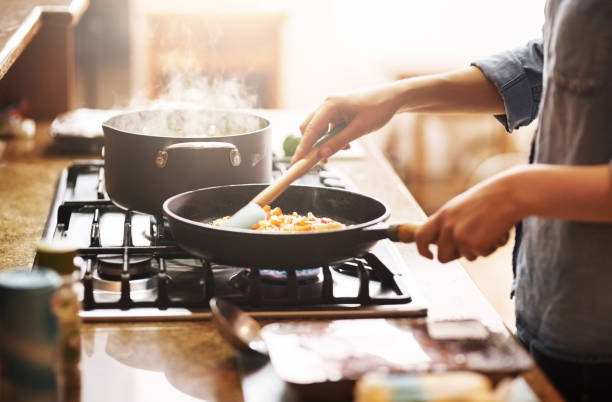
When cooking, especially with certain types of cookware or ingredients, it’s important to take precautions to ensure safety, prevent accidents, and maintain the quality of your food. Here are some cooking precautions to keep in mind:
- Avoid Overheating Nonstick Cookware: Nonstick cookware should not be overheated, as it can release harmful fumes. Use nonstick pans within their recommended temperature limits and avoid high heat settings.
- Use Oven Mitts and Pot Holders: When handling hot pots, pans, or baking dishes, always use oven mitts or pot holders to protect your hands from burns.
- Keep Handles Away from Heat Sources: Ensure that pot and pan handles are positioned away from heat sources, such as stove burners or oven edges, to prevent accidental burns or spills.
- Use Utensils Safely: When cooking, use appropriate utensils such as wooden or silicone spatulas, spoons, and tongs to avoid scratching nonstick or delicate cookware surfaces.
- Be Cautious with Hot Oil: When frying or sautéing with hot oil, be cautious to avoid splatters and spills. Use a splatter screen if necessary and keep a lid nearby to smother any oil fires.
- Monitor Cooking Progress: Stay attentive to your cooking to prevent overcooking or burning food. Set timers as needed and check food regularly to ensure it’s cooking evenly.
- Keep Flammable Items Away: Keep flammable items such as kitchen towels, paper towels, and curtains away from stove burners and other heat sources.
- Use Cutting Boards Safely: When using knives and cutting boards, handle them carefully to avoid cuts and injuries. Use a stable surface for cutting and keep knives sharp for safer cutting.
- Store Chemicals Safely: Store cleaning chemicals, such as oven cleaners and degreasers, in a safe place away from food and cooking areas. Follow manufacturer instructions for proper use and storage.
- Practice Food Safety: Follow food safety guidelines, such as washing hands, using separate cutting boards for raw meat and produce, and cooking food to the recommended internal temperatures to prevent foodborne illnesses.
By following these cooking precautions, you can create a safe and enjoyable cooking environment while ensuring the quality and safety of your meals.
Frequently Asked Questions (FAQs) – What Is A Nonreactive Pan
Q: What is a nonreactive pan, and why is it important in cooking?
A: A nonreactive pan is typically made of materials such as stainless steel, glass, or ceramic that do not react with acidic or alkaline ingredients. This is crucial in preserving the flavors of delicate dishes like tomato-based sauces or citrus-infused recipes.
Q: How does using a nonreactive pan enhance the taste of food?
A: By using a nonreactive pan, you ensure that the flavors of your ingredients remain pure and untainted. This is especially important when cooking acidic foods like tomatoes or vinegar-based sauces, as reactive pans can alter the taste and even cause discoloration.
Q: What are the benefits of cooking with a nonreactive pan?
A: Cooking with a nonreactive pan provides consistent heat distribution, prevents metallic tastes in your food, and allows for easy cleaning due to its non-stick properties. It’s also ideal for cooking delicate foods that require precise temperature control.
Q: Can I use a nonreactive pan for all types of cooking?
A: Nonreactive pans are versatile and can be used for a wide range of cooking tasks, including sautéing, simmering, and braising. However, they may not be suitable for high-heat cooking methods such as searing, where a reactive pan like cast iron or carbon steel is preferred.
Q: Are nonreactive pans safe to use with acidic ingredients?
A: Yes, nonreactive pans are specifically designed to be safe for use with acidic ingredients such as lemon juice, vinegar, or wine. They won’t impart any metallic taste or react chemically with these acidic components, ensuring the integrity of your dishes.
Q: How do I care for and maintain a nonreactive pan?
A: To maintain the quality of your nonreactive pan, avoid using metal utensils that can scratch the surface. Instead, opt for silicone or wooden utensils. Additionally, hand-washing with mild detergent is recommended to preserve its non-stick properties and longevity.
Q: Can I use nonreactive pans in the oven?
A: Many nonreactive pans are oven-safe, but it’s essential to check the manufacturer’s guidelines for specific temperature limits. This versatility makes them suitable for a wide range of recipes that require both stovetop and oven cooking.
Q: Are nonreactive pans suitable for induction cooktops?
A: Yes, certain nonreactive pans, especially those made of stainless steel with magnetic properties, are compatible with induction cooktops. This makes them an excellent choice for modern kitchens equipped with induction cooking technology.
Q: Do nonreactive pans come in different sizes and styles?
A: Yes, nonreactive pans are available in various sizes, from small saucepans to large stockpots, catering to different cooking needs. They also come in different styles, such as straight-sided pans for efficient stirring and sloped pans for easy flipping of ingredients.
Q: Are nonreactive pans environmentally friendly?
A: Nonreactive pans made from materials like stainless steel or ceramic are generally considered environmentally friendly due to their durability and recyclability. Choosing high-quality nonreactive pans can contribute to reducing waste and promoting sustainability in the kitchen.
Conclusion
In conclusion, nonreactive pans are essential tools in the kitchen, particularly for cooking acidic or reactive foods.
Their ability to resist chemical reactions with acidic ingredients ensures that flavors remain true and that no unwanted metallic tastes are imparted to the food.
Whether using stainless steel, ceramic, or coated pans, understanding the concept of nonreactivity and choosing the right pan for the task can greatly enhance the quality and taste of your culinary creations.
Other Articles You May Also Like:
- How To Fix Scratched Non Stick Pan (4 Easy Steps)
- What Can You Cook In Stainless Steel Pans (5 Things You Should Know)
- When To Throw Away Non Stick Pans (4 Amazing Facts)
- How To Make A Ceramic Pan Non Stick Again (6 Essential Steps)
- Can You Put Non Stick Pans In The Dishwasher (5 Cool Facts)
- Why Do Aluminum Pans Get Discolored In the Dishwasher (8 Powerful Reasons)
- Can You Reuse Aluminum Foil Pans (5 Cool Facts)
- Can You Deep Fry In Nonstick Pan (5 Things You Should Know)